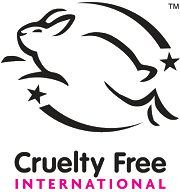Testing cosmetics on animals
Testing cosmetics on animals refers to the practice of using non-human animals to test the safety and efficacy of cosmetic products and their ingredients. This practice has been a subject of ethical debate and regulatory scrutiny.
History[edit | edit source]
The use of animals in cosmetic testing dates back to the early 20th century. Initially, it was employed to ensure the safety of products for human use. Over time, the practice has faced increasing opposition from animal rights groups and the general public.
Methods[edit | edit source]
Common methods of testing cosmetics on animals include:
- Draize test: This test involves applying a substance to the eyes or skin of a rabbit to observe potential irritation or damage.
- Acute toxicity test: This test determines the lethal dose of a substance by administering it to animals, usually rodents.
- Skin sensitization test: This test assesses the potential of a substance to cause allergic reactions.
Ethical Concerns[edit | edit source]
Animal testing for cosmetics raises several ethical issues, including:
- Animal welfare: Concerns about the pain and suffering inflicted on animals during testing.
- Animal rights: The belief that animals have intrinsic rights that should not be violated for cosmetic purposes.
- Alternatives to animal testing: The development of alternative methods, such as in vitro testing and computer modeling, that do not involve animals.
Regulations[edit | edit source]
Different countries have varying regulations regarding animal testing for cosmetics:
- European Union: The EU has banned the sale of cosmetics tested on animals since 2013.
- United States: The U.S. does not have a federal ban on animal testing for cosmetics, but some states have enacted their own bans.
- China: China has historically required animal testing for imported cosmetics, but recent changes have allowed for some exemptions.
Alternatives[edit | edit source]
Several alternatives to animal testing have been developed, including:
- In vitro testing: Laboratory techniques that use cell cultures to test the safety of substances.
- Computer modeling: Computational methods that predict the potential effects of substances based on existing data.
- Human volunteer studies: Controlled studies involving human participants to assess the safety of cosmetic products.
Public Opinion[edit | edit source]
Public opinion on animal testing for cosmetics has shifted significantly in recent years. Many consumers now prefer products labeled as "cruelty-free," and numerous companies have adopted policies against animal testing.
See also[edit | edit source]
References[edit | edit source]
External links[edit | edit source]
Navigation: Wellness - Encyclopedia - Health topics - Disease Index - Drugs - World Directory - Gray's Anatomy - Keto diet - Recipes
Search WikiMD
Ad.Tired of being Overweight? Try W8MD's physician weight loss program.
Semaglutide (Ozempic / Wegovy and Tirzepatide (Mounjaro / Zepbound) available.
Advertise on WikiMD
WikiMD is not a substitute for professional medical advice. See full disclaimer.
Credits:Most images are courtesy of Wikimedia commons, and templates Wikipedia, licensed under CC BY SA or similar.Contributors: Prab R. Tumpati, MD

